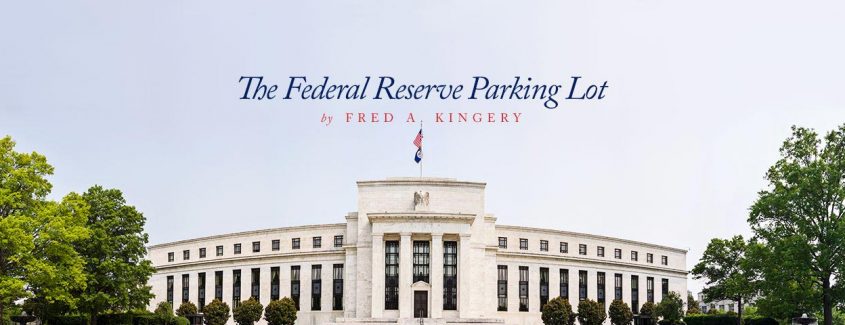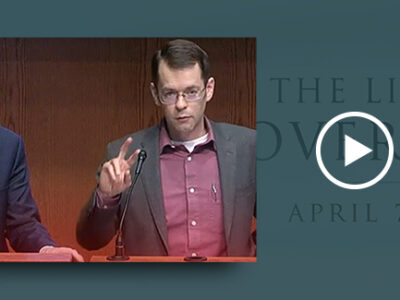
Recent commentary by David Stockman, former Reagan Administration budget chief, is timely for investors because it focuses on the Federal Reserve’s internal debate about “policy normalization” in advance of Wednesday’s important Federal Open Market Committee meeting.
Stockman argues that the Fed’s desire to raise rates, first, followed by actions to shrink its balance sheet (allowing its debt securities to mature without reinvesting the proceeds) is “putting the cart before the horse” and that the reverse – reducing the balance sheet followed by raising interest rates – is the right path to “normalization.”
Stockman has a valid point, but there is potentially much more to the story.
“Policy normalization” is Federal Reserve Bank language for how it will shrink its $4.4 trillion-dollar accumulation of debt securities and when it will start raising the overnight funding interest rate, known as the “federal funds rate,” for the U.S. banking system.
All eyes in the financial markets are focused on the upcoming September Federal Open Market Committee (F.O.M.C.) meeting to see if the Federal Reserve Bank, after five years, will begin the process of raising interest rates and/or signal a timetable for allowing its holdings of debt securities to mature without reinvesting the proceeds. Investors will be watching for even the slightest change in direction.
Current expectations are for the Fed to slightly raise the overnight funds rate first and to make no comment on the future size of the balance sheet. Very few investors think the present size of Fed’s balance sheet will be a permanent fixture of the financial landscape for the foreseeable future. In other words, investors expect that the size of Fed’s portfolio of debt securities will decrease as those securities mature.
Consider if investors migrate to the assumption that the Fed will continue to indefinitely reinvest the maturing principal of its $4.4 trillion debt portfolio. Moreover, what if the Fed determines that additional rounds of quantitative easing (QE) – money printing with a corresponding increase in the Fed’s holdings of debt securities – is needed to simply maintain the economy or perhaps worse, is the one and only tool available to fight the next recession?
Richard Duncan, author, economist, has argued that QE is a form of permanent debt cancellation. The size of the Fed’s balance sheet and that of every other central bank in the world is now permanent in his view.
The massive balance sheets of the world’s central banks have grown from a collective $5.4 trillion in 2008 to approximately $14.4 trillion currently. The $9 trillion increase, according to Duncan, can be viewed as a permanent parking lot for sovereign debt if the debt is simply rolled at maturity year in year out. The indefinite debt roll, in effect, would simply be debt cancellation. Notice what the Bank of Japan has done for the past 25 years.
Thanks to the fractional reserve banking system, the $9 trillion increase of central bank reserves has translated into a net global credit expansion (e.g., loans of various sorts) of over $57 trillion dollars in the past 7 years. But, it has supported only a net expansion of global GDP of approximately $17 trillion. The rest of this $40 trillion liquidity has supported a global financial asset inflation. So QE has generously inflated financial assets (e.g., stocks) but has translated into very little real growth in the global economy.
As Stockman points out, “The stock market’s price level is a measure of liquidity and the direction of the trend of liquidity, nothing more, and nothing less.” In other words, the stock market’s record valuation is driven more by excess money created by central banks flowing into financial markets rather than traditional measures of value like real corporate earnings generated by real economic activity and the attendant real wealth creation. This liquidity has fed into record corporate debt issuance that in turn has financed massive stock buybacks which in turn manufactured an increase in the E (earnings) of the stock markets P/E (price/earnings) valuation metric. Lower P/Es justify higher stock prices; excess cash created by central banks does not.
If the direction of Federal Reserve liquidity flow becomes recognized as the enduring sole basis for stock market asset valuation, then the traditional measure of real economic growth and the attendant real wealth created go out the window as the primary basis for market valuation.
Any hint of a change in available liquidity will easily translate into the kind of volatility seen in the weeks of August 17th and 24th. Moreover, the Fed and Mr. Market will be trapped in a relationship where Fed board members’ words related to Fed liquidity carry far more influence than hard economic facts. Mr. Market watches the Fed and the Fed watches Mr. Market.
Eventually, the artificial nature of both sides’ observations will unfold into a financial crisis that will dwarf the last one. All that will be required is for perception of the Federal Reserve balance sheet as a “permanent parking lot” to take root. How close to establishing that perception are we?





